What is the CDCP?
The Canadian Dental Care Plan (CDCP) is a federal program designed to make dental care more accessible and affordable for eligible Canadian residents. It provides coverage for a wide range of essential oral health services.
Who Is Eligible to Apply Now (Coverage Until June 30, 2025)?
- Seniors aged 65 and over
- Children under 18 years old
- Adults with a valid Disability Tax Credit certificate for 2023
- Applications will open for eligible Canadians aged 18 to 64 who are not already covered in May 2025.
Time to Renew Your CDCP Coverage for 2025–2026
If you’re currently enrolled in the CDCP, it’s time to renew your coverage to ensure you continue receiving dental benefits without interruption.
Here’s What You Need to Know:
- Renew After Filing Your 2024 Tax Return
Before you can renew:- File your 2024 tax return
- Receive your Notice of Assessment from the CRA
- Look out for a renewal letter from the Government of Canada with instructions
- Deadline: Renew by June 1, 2025
- To avoid a gap in coverage, complete your renewal before June 1, 2025
- Late renewals may be accepted, but retroactive coverage is not available
- Expenses during a gap period will not be reimbursed
- Information You’ll Need to Renew
Be ready to provide the Government of Canada with:- Social Insurance Number
- CDCP Client Number
- Mailing and home address
- Marital status (if applicable)
- Phone number and email address
- Information about any other government dental coverage (if applicable)
- After You Renew
Once renewed, you’ll receive:- A confirmation letter
- Your new coverage start date
- Your updated co-payment amount, based on your 2024 adjusted family net income
- What If You Don’t Renew or Are No Longer Eligible?
If you don’t renew or no longer qualify, your CDCP coverage will be terminated on June 30, 2025, and you’ll receive a formal notice of termination.
Don’t Wait Until the Last Minute!
Stay ahead by filing your taxes early, watching for your renewal letter, and completing your CDCP renewal before the June 1 deadline. At Stouffville SMILES Dentistry, we are dedicated to ensuring your smile remains healthy and your coverage stays secure.
What is covered by the CDCP?
The CDCP will help cover a wide range of oral health care services that prevent and treat oral health issues and diseases. Examples of services that could be covered under the CDCP when recommended by an oral health provider, include:
- preventive services, such as scaling (cleaning), polishing, sealants, and fluoride
- diagnostic services, such as examinations and x-rays
- restorative services, such as fillings
- endodontic services, such as root canal treatments
- prosthodontic services, such as complete dentures and partial removable dentures
- periodontal services, such as deep scaling
- oral surgery services, such as extractions
- orthodontic services that would improve oral health outcomes for eligible clients (available starting in 2025)
MOST oral health care services will require preauthorization, which means that prior approval is required from the CDCP before the treatment is provided, to confirm that it will be covered under the plan.
Preauthorization services will be available starting in November 2024. 5 This mean services that require pre-authorization will NOT be covered until then and these include:
- prosthodontic services such as crowns and dentures
- periodontal services such as deep scaling and periodontal surgeries
The CDCP will only pay for oral health care services covered within the plan at the established CDCP fees. These fees are not the same as the provincial and territorial oral health associations suggested fee guides that providers often use to charge for oral health services. People covered under the CDCP may have to pay any additional charges directly to the oral health provider.
What is NOT covered by the CDCP?
The CDCP does not cover any dental procedures related to non-eligible dental services, nor does it cover dental procedures related to a dental service reviewed by the CDCP where it did not meet the established policies, guidelines, and criteria. Some examples of non-eligible dental services are:
- temporomandibular joint (TMJ) therapy and appliances
- extensive rehabilitation and cosmetic services, such as veneers, whitening, and bonding
- sports mouth guards and night guards
- snoring and sleep apnea appliances
- sedation services, except for nitrous oxide
- services provided in a hospital setting
- services provided outside of Canada
These services are defined as exclusions and will not be considered for coverage or for an appeal at any time.
Receiving Dental Care at Stouffville SMILES Dentistry
Yes. As always we will prioritize the highest standards of care for our patients based on what our doctors recommend irrespective of what is covered by the CDCP. There are many limitations to this program such as when fillings, root canal treatment, etc will be covered. We will do our best to communicate this to you.
As a new patient, you will always start with a new patient examination and scaling to determine the best treatment plan OR an emergency examination and the relevant radiographs. Any further treatment will then be discussed with you along with what may be covered by CDCP and what may not be.
Stay Informed
For the most up-to-date information, visit the official Government of Canada CDCP website:
Learn more from Federal Government
Have CDCP Questions or Need to Book an Appointment?
We’re here to help with your coverage, co-payment details, and scheduling your visit. Contact us and our friendly staff will be happy to assist you.

